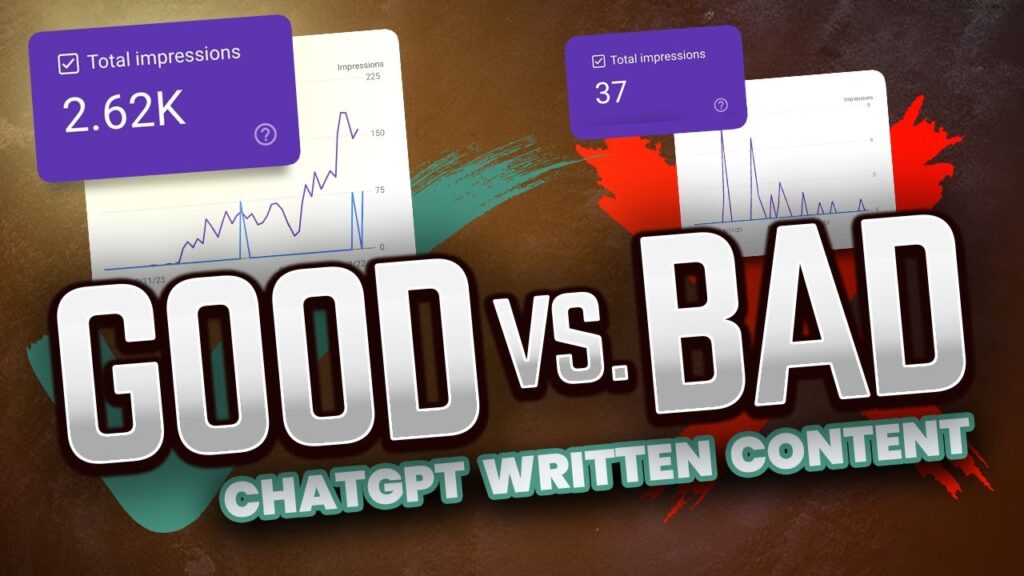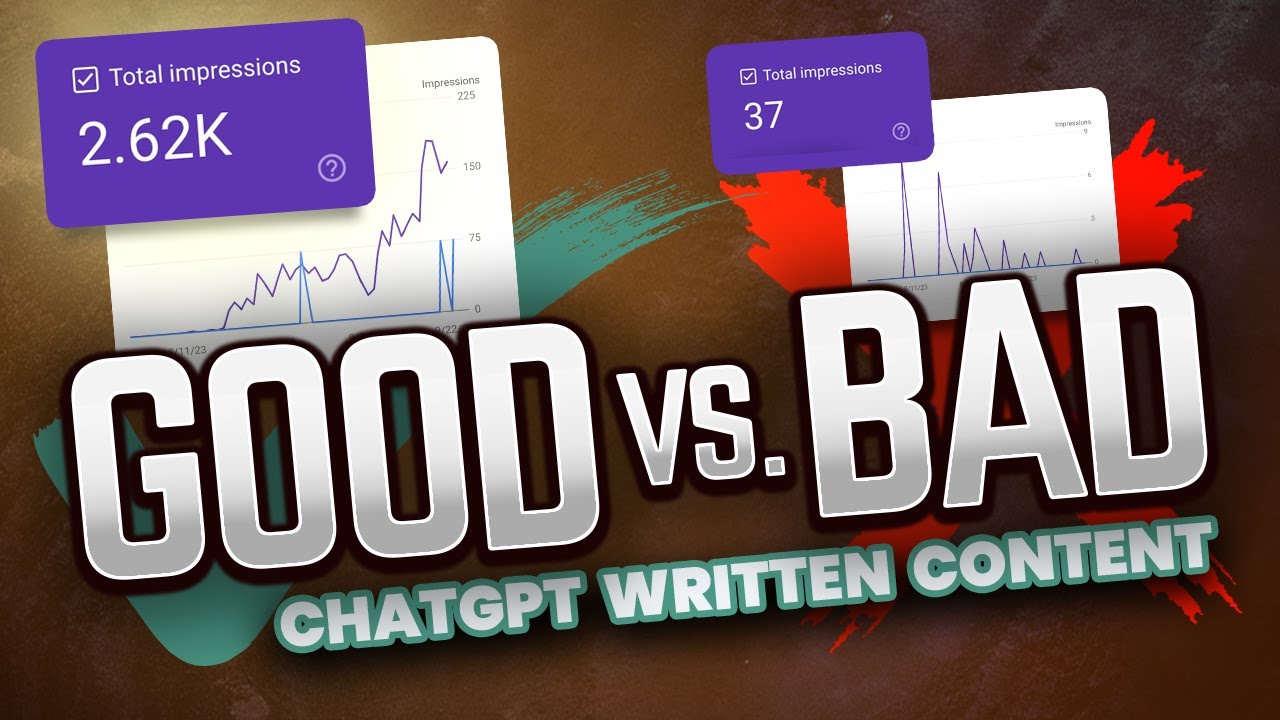Mastering AI SEO and ranking on Google within 24 hours with ChatGPT is the focus of this article. The workflow involves using the first prompt to create a detailed outline, visualizing data using code interpreter, and implementing the prepping prompt engineering method for writing the blog post. By utilizing ChatGPT-4 and advanced data analysis, you can create a comprehensive outline that includes LSI and NLP keywords, logical inclusions, and semantically related searches. It’s crucial to tailor the outline to your target audience and set clear goals for the article. Conducting a competitive analysis and using data to support claims are also recommended. Consistency in tone and style throughout the outline, as well as careful proofreading, are essential.
In Conversation 2, you will seek assistance in writing a blog post using burstiness, creativity, internal links, lists, and tables. The content will emphasize the significance of quality content in achieving successful website ranking on Google. The author emphasizes that they do not endorse creating spammy content with AI. Instead, they present a new workflow and method for producing high-ranking content. By comparing two articles, one underperforming and another with good image SEO, the author demonstrates their method for success. Utilizing ChatGPT 3.5, creating a detailed outline with various headings and subheadings, addressing the target audience’s needs, setting clear goals, and using data to support claims are highlighted. The article concludes with an example table and a reminder that access to ChatGPT 4 requires payment for the API.
Mastering AI SEO and Ranking on Google with ChatGPT in 24 Hours

Introduction
Welcome to the world of AI SEO, where you can master the art of ranking on Google within just 24 hours with the help of ChatGPT. In this comprehensive guide, we will walk you through the entire workflow, strategies, and techniques to achieve SEO success using artificial intelligence. Whether you’re a beginner or an experienced SEO professional, this article will provide you with valuable insights to boost your website’s visibility and drive organic traffic.
1. Understanding the Workflow
To kickstart your AI SEO journey, it’s crucial to understand the workflow involved. Let’s delve into the key steps:
1.1 The First Prompt: Creating an Outline
The first prompt sets the foundation for your article. Start by conducting keyword research and analyzing the existing content that ranks on Google. From this research, choose a relevant and compelling title for your article. Next, develop an extensive outline by listing 10-20 questions or common themes associated with the chosen keyword. Incorporate LSI (Latent Semantic Indexing) and NLP (Natural Language Processing) keywords to ensure comprehensive coverage of the topic. Aim for an outline that is detailed, comprehensive, and serves as a one-stop resource for readers.
1.2 Visualizing Data with Code Interpreter
Visualizations play a crucial role in enhancing the reader’s engagement and understanding of the content. Utilize code interpreters to create graphs, pie charts, flow charts, or any other form of visual representation that complements your article. These visual elements not only break the monotony of text but also provide valuable insights to your audience.
1.3 Prepping Prompt Engineering Method for Writing the Blog Post
Take advantage of the prepping prompt engineering method using ChatGPT in the OpenAI Playground. Configure the temperature and maximum length according to your preferences. Remember, while ChatGPT-4 is highly recommended for better results, ChatGPT-3.5 can still be utilized effectively. Start the writing process when you’re ready and leverage the burstiness and creativity of ChatGPT to produce compelling content.
2. Strategy: Utilizing ChatGPT-4 and Advanced Data Analysis
Embark on an effective strategy that combines the power of ChatGPT-4 with advanced data analysis techniques to achieve AI SEO mastery.
2.1 Leveraging ChatGPT-4 for AI SEO Mastery
ChatGPT-4 is a powerful tool that harnesses the capabilities of artificial intelligence to optimize your SEO efforts. Its improved language generation, context understanding, and ability to provide more accurate responses make it a valuable asset. By using ChatGPT-4, you can enhance your content quality, improve keyword optimization, and deliver superior user experiences.
2.2 Analyzing Data to Identify SEO Opportunities
Data analysis is a crucial aspect of AI SEO. By exploring relevant data sets and metrics, you can identify SEO opportunities and tailor your content accordingly. Analyze keyword performance, competitor strategies, and user behavior to gain a competitive edge. This data-driven approach allows you to make informed decisions, optimize your content, and improve your website’s ranking on Google.
2.3 Developing a Comprehensive Outline for the Article
A comprehensive outline acts as a roadmap for your article and ensures logical and coherent flow. Incorporate LSI and NLP keywords throughout the outline to optimize for search engines. Pay attention to semantically related searches and include content that addresses the needs and interests of your target audience. Set clear goals for your article and conduct a competitive analysis to differentiate your content from others. Support your claims with data, making your article more credible and authoritative.
3. Crafting an Effective Outline for AI SEO Success
Crafting a thoughtful and well-structured outline is paramount for AI SEO success. Let’s explore the key considerations:
3.1 Incorporating LSI and NLP Keywords for Optimization
Integrate LSI and NLP keywords strategically within your outline to enhance optimization. By including these keywords, you ensure that your content is relevant, comprehensive, and aligned with search engine algorithms. Conduct keyword research to identify suitable LSI and NLP keywords that resonate with your target audience.
3.2 Logical Inclusions and Semantically Related Searches
When crafting your outline, think beyond the basic information and consider logical inclusions that enhance the reader’s experience. Emulate the “People Also Ask” section on Google by addressing related queries and providing valuable insights. Explore semantically related searches and incorporate them into your outline to broaden the scope of your content and attract a wider audience.
3.3 Tailoring the Outline to the Target Audience
Identifying your target audience is crucial for creating content that resonates with their needs and interests. Understand their demographics, pain points, and preferences to tailor your outline accordingly. By aligning your content with your audience’s expectations, you can optimize user engagement and increase the chances of higher rankings on Google.
3.4 Setting Clear Goals for the Article
Clearly define the goals you aim to achieve with your article. Whether it’s educating readers, driving conversions, or establishing your expertise, having clear goals will help you craft content that aligns with your desired outcomes. By staying focused on your objectives, you can deliver impactful and results-driven content.
3.5 Conducting a Competitive Analysis
Analyze the content that ranks well for your targeted keyword. Identify the strengths and weaknesses of these articles and use this knowledge to refine your outline. By delving deeper into your competitors’ strategies, you can create content that surpasses the existing competition and fulfills the unmet needs of your target audience.
3.6 Supporting Claims with Data
To enhance the credibility and authority of your article, back up your claims with data. Utilize reliable sources, statistical evidence, research findings, or case studies to substantiate your content. This data-driven approach not only reinforces the credibility of your claims but also provides readers with valuable insights and accurate information.
4. Maintaining Consistency and Quality in Tone and Style
Consistency in tone and style is crucial for a seamless reading experience. Let’s explore how to ensure consistency throughout your article:
4.1 Ensuring Consistency in Tone and Style
Maintain a consistent tone and style throughout your article to establish a strong brand voice and engage readers effectively. Avoid abrupt shifts in tone or inconsistencies in style to ensure a cohesive and engaging experience for the reader.
4.2 Proofreading for Error-Free Content
Before publishing your article, carefully proofread it to eliminate any errors in grammar, spelling, or punctuation. A polished and error-free article not only enhances your professionalism but also elevates the overall reading experience. Take the time to review your content thoroughly, ensuring its quality and accuracy.
5. Leveraging Burstiness, Creativity, and Internal Links
To enhance the impact of your AI SEO content, leverage burstiness, creativity, and internal links. Let’s explore how these elements can elevate your article:
5.1 Capturing Attention with Burstiness
Burstiness refers to creating content that captivates and excites readers. Inject your content with engaging anecdotes, surprising facts, or impactful storytelling to capture readers’ attention from the beginning. By infusing burstiness into your writing, you can create a memorable and immersive reading experience.
5.2 Infusing Creativity into the Content
Injecting creativity into your content boosts its appeal and distinguishes it from competitors. Utilize creative writing techniques, such as vivid descriptions, unique perspectives, or imaginative examples, to make your content more compelling and memorable. By thinking outside the box, you can deliver content that resonates with your target audience and stands out in the crowded online landscape.
5.3 Utilizing Internal Links Effectively
Internal links play a critical role in guiding readers through your content and improving website navigation. Incorporate relevant anchor text and utilize proper HTML tags (such as ) to create internal links that seamlessly connect related sections within your article. This strategy not only enhances user experience but also signals to search engines the importance and structure of your content.
6. Importance of Quality Content for Successful Website Ranking
Quality content remains the key driver of successful website ranking on Google. Investing time and effort into producing high-quality, informative, and engaging content is crucial. By meeting the needs of your audience, delivering valuable insights, and adhering to best practices, you can establish your website as an authoritative source in your niche. Remember, content is the backbone of SEO success.
7. Adopting an Ethical Approach to AI SEO
Ethics play a vital role in AI SEO. To maintain integrity and avoid spammy content creation with AI, it’s important to follow ethical practices. Focus on providing genuine user value, delivering accurate and reliable information, and respecting search engine guidelines. By prioritizing ethical SEO practices, you can build a reputation of trust and credibility in the online ecosystem.
11. Conclusion
In conclusion, mastering AI SEO and ranking on Google within 24 hours with ChatGPT is undoubtedly an achievable feat. By following the outlined workflow, understanding the strategies, and crafting effective outlines, you can enhance your website’s visibility and drive organic traffic. Remember to maintain consistency and quality throughout your content, leveraging burstiness, creativity, and internal links to captivate readers. With an ethical approach to AI SEO, you can achieve long-term success and establish your website as a trusted authority in your industry. Remember to practice continuous learning, adapt to algorithm updates, and always prioritize the needs of your target audience.
11.1 Table Example: Structuring Article Content
| Heading | Subheading |
|---|---|
| 1 | Understanding the Workflow |
| 1.1 | The First Prompt: Creating an Outline |
| 1.2 | Visualizing Data with Code Interpreter |
| 1.3 | Prepping Prompt Engineering Method for Writing |
| 2 | Strategy: Utilizing ChatGPT-4 and Advanced Analysis |
| 2.1 | Leveraging ChatGPT-4 for AI SEO Mastery |
| 2.2 | Analyzing Data to Identify SEO Opportunities |
| 2.3 | Developing a Comprehensive Outline |
| 3 | Crafting an Effective Outline for AI SEO Success |
| … | … |
| 11 | Conclusion |
| 11.1 | Table Example: Structuring Article Content |
| 11.2 | Reminder: Accessing ChatGPT-4 Requires API Subscription |
11.2 Reminder: Accessing ChatGPT-4 Requires API Subscription
Please note that accessing ChatGPT-4 requires a paid API subscription. Ensure you have the necessary access to leverage the advanced capabilities of ChatGPT-4 in your AI SEO journey.
